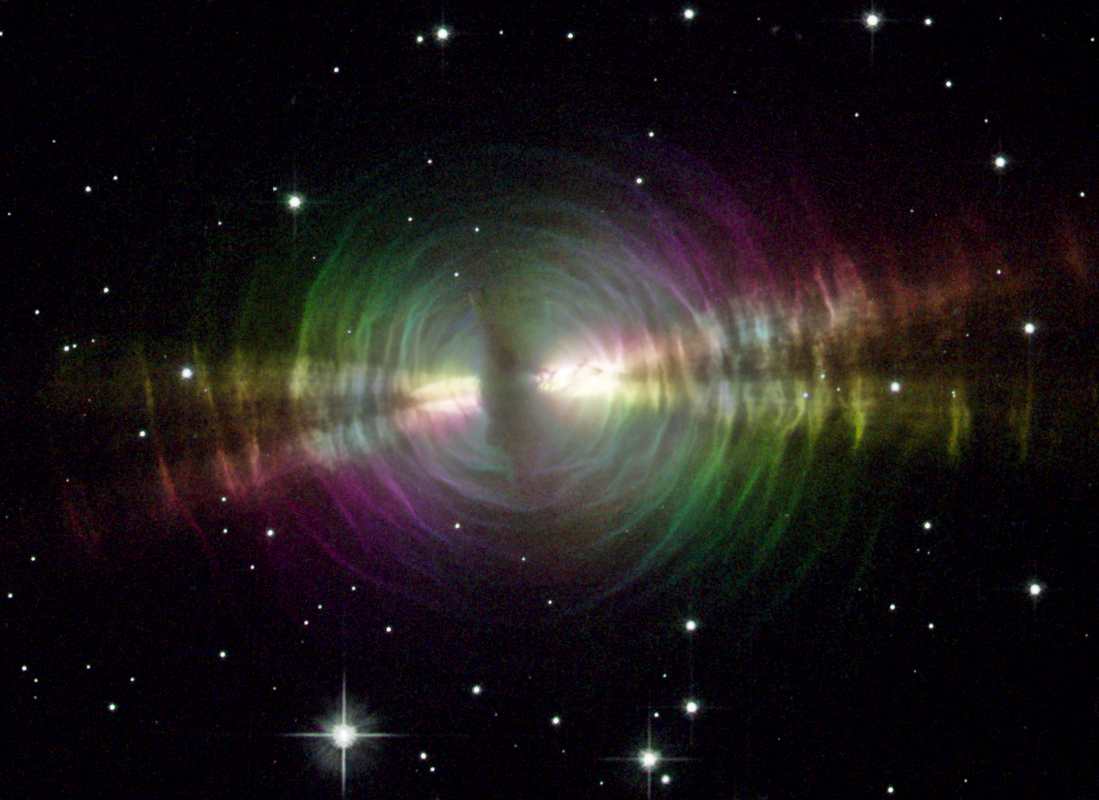
Where is the center of the Egg Nebula? Emerging from a cosmic egg, the star in the center of the Egg Nebula is casting away shells of gas and dust as it slowly transforms itself into a white dwarf star. The Egg Nebula is a rapidly evolving pre- planetary nebula spanning about one light year. It lies some 3,000 light-years away toward the northern constellation Cygnus. Thick dust blocks the center star from view, while the dust shells farther out reflect light from this star. Light vibrating in the plane defined by each dust grain, the central star, and the observer is preferentially reflected, causing an effect known as polarization. Measuring the orientation of the polarized light for the Egg Nebula gives clues to location of the hidden source. Taken by Hubble's Advanced Camera for Surveys in 2002, this image is rendered in artifical "Easter-Egg" colors coded to highlight the orientation of polarization.
from NASA https://ift.tt/wHI4MkV
Comments
Post a Comment